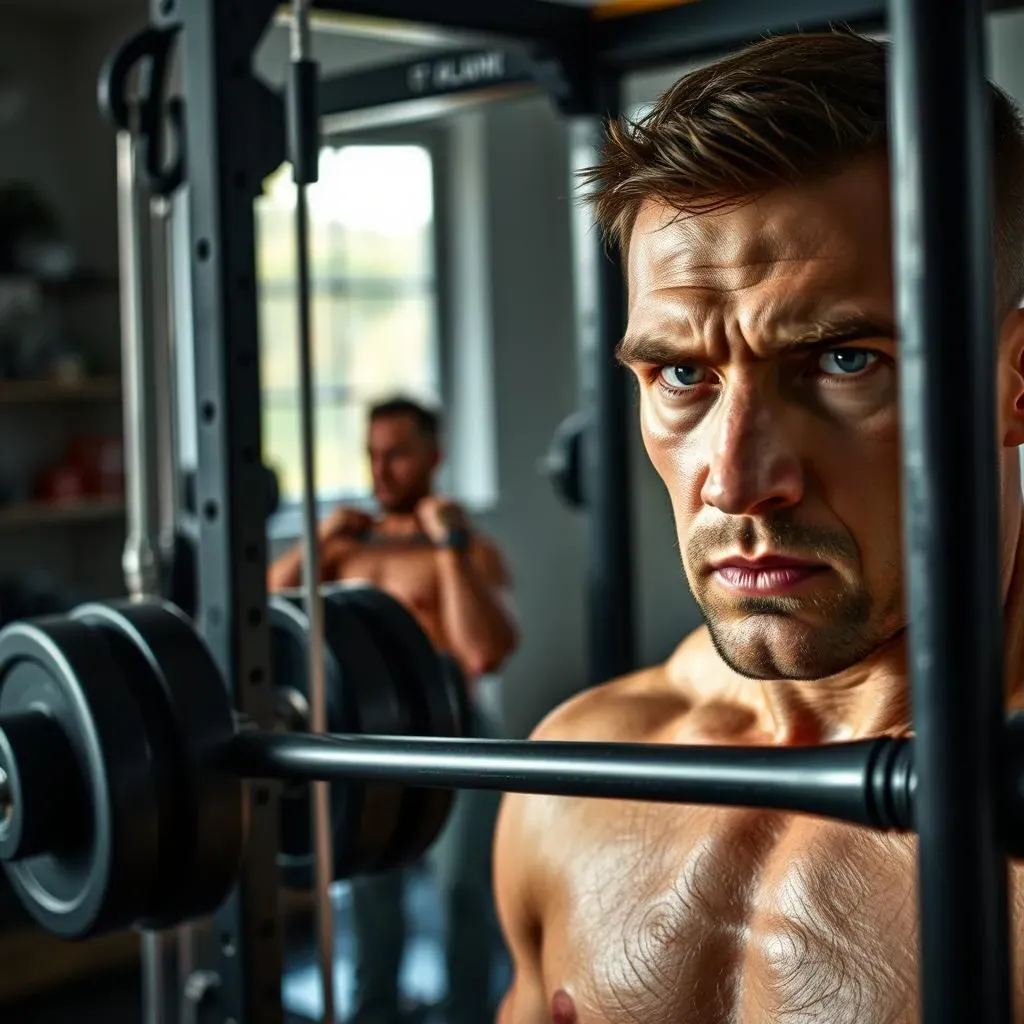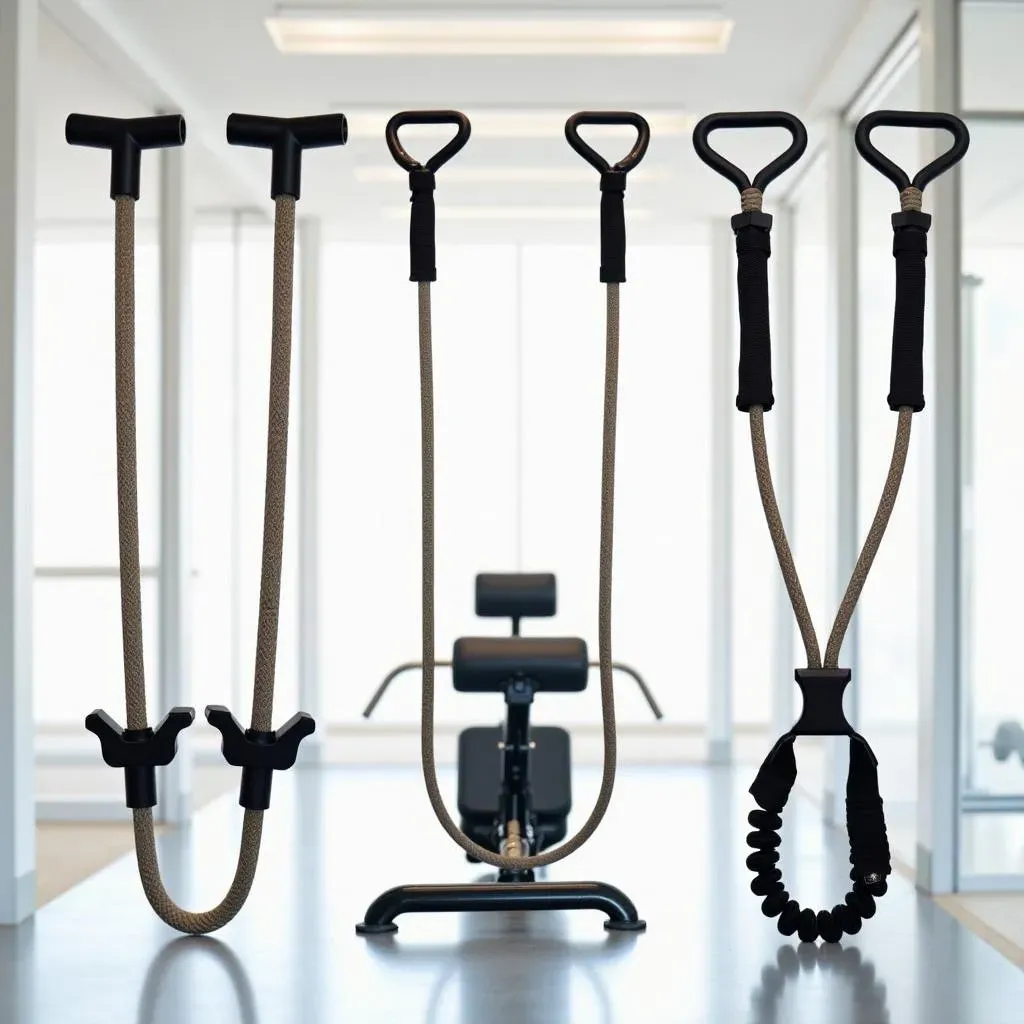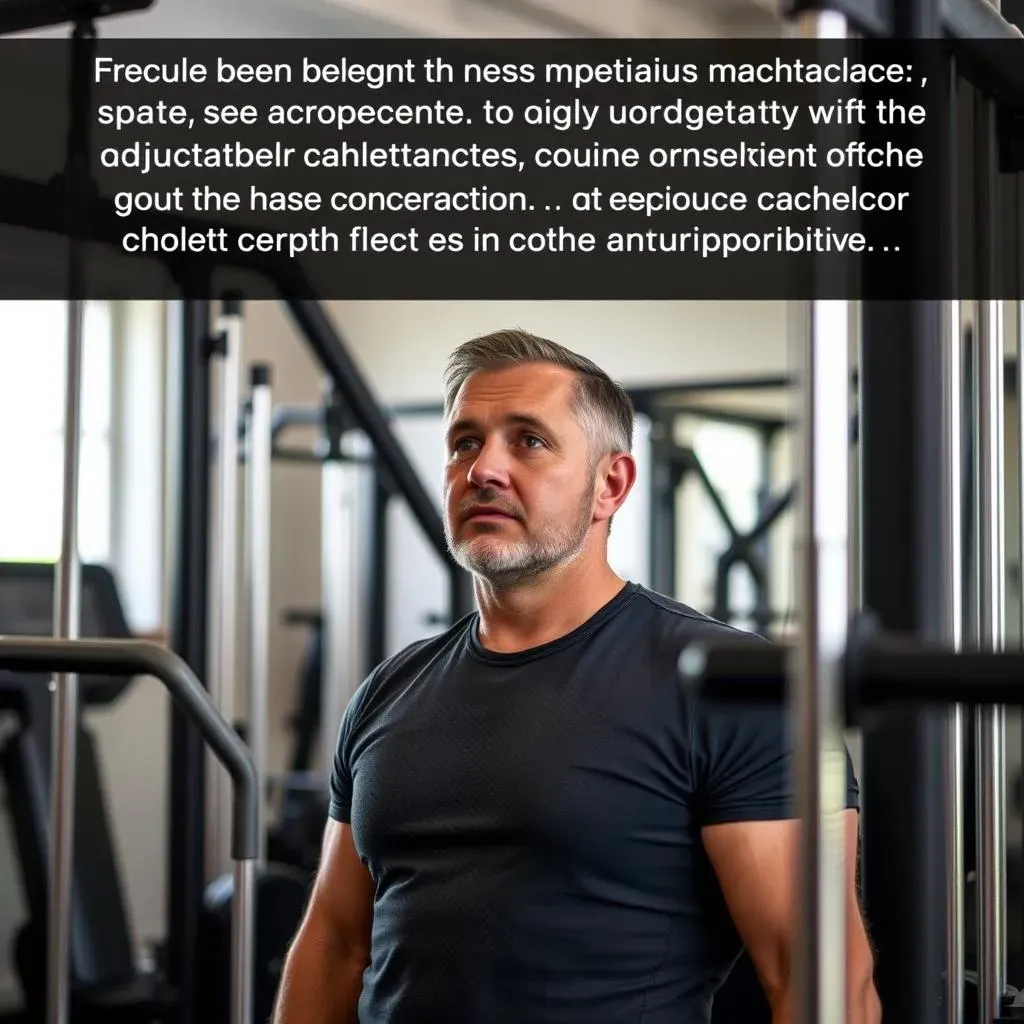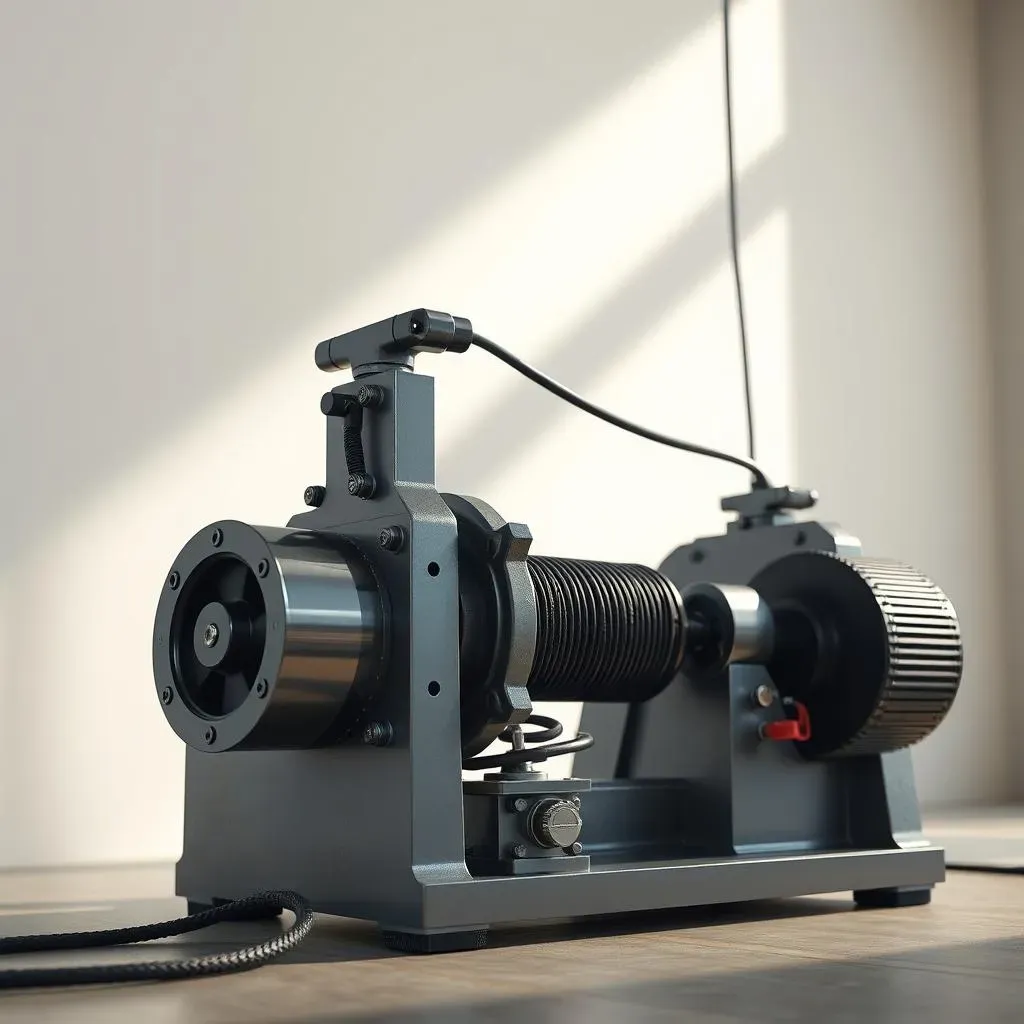Table of Contents
Thinking about adding a **home gym equipment cable machine** to your workout space? You're in the right place. These machines are super versatile, letting you do all sorts of exercises, from bicep curls to lat pulldowns, without needing a ton of different gadgets. It's not just about lifting heavy; it's about moving your body in ways that feel good and build real strength. This article will be your guide, we will break down the best cable machines out there, talk about the must-have attachments, and give you the lowdown on what to look for when buying one. We'll also go through the benefits of having a cable machine at home and answer some common questions. So, whether you're just starting out or you're a seasoned lifter, get ready to level up your home gym game with the perfect cable machine.
Top Cable Machines for Your Home Gym
Top Cable Machines for Your Home Gym
The REP Fitness Ares Cable Attachment
Okay, so you're serious about building a killer home gym, right? Then you absolutely need to know about the REP Fitness Ares. This isn't just some flimsy add-on; it's a beast of a machine that attaches to your power rack, making it super space-efficient. I've seen folks transform their entire workout routine with this thing. It's like having a whole gym's worth of exercises available at your fingertips. It’s sturdy, smooth, and it can handle pretty much anything you throw at it, making it a solid pick for anyone looking for a top-tier cable machine without taking up a ton of space.
Giant Lifting Garage Gym Power Rack With Lat/Low Row
Now, if space is really tight, or you are just starting out, the Giant Lifting Garage Gym Power Rack with Lat/Low Row is a game changer. This one combines a power rack with a lat pulldown and low row cable system, it's like getting three pieces of equipment for the space of one. It's perfect for those of us who don't have a huge basement or garage to dedicate to a gym, but still want to do a full range of exercises. I remember when I was first starting out, my gym was basically a corner in my bedroom. This type of setup would have been perfect back then. It's not as heavy-duty as the REP Ares, but it still packs a punch.
Cable Machine | Best For | Key Features |
|---|---|---|
REP Fitness Ares Cable Attachment | Serious lifters, space-efficient | Sturdy, smooth, versatile |
Giant Lifting Garage Gym Power Rack With Lat/Low Row | Small spaces, beginners | Combines rack and cable system |
Bells of Steel Cable Crossover Power Rack Attachment | Existing Bells of Steel power rack owners | Cost-effective, easy integration |
Bells of Steel Cable Crossover Power Rack Attachment
Last but not least, if you already rock a Bells of Steel power rack, check out their Cable Crossover Attachment. It's a no-brainer. It's designed to fit perfectly with their racks, which makes it super easy to install. I’ve seen people put these together in under an hour. And the best part? It’s way more budget-friendly than buying a whole new cable machine. It's like adding a whole new dimension to your existing setup without breaking the bank. Plus, it's pretty darn smooth, which is always a plus when you're trying to get those perfect reps.
Essential Cable Machine Attachments
Essential Cable Machine Attachments
The Must-Have Handles
Alright, so you've got your cable machine, that's awesome! But let's be real, it's only as good as the attachments you pair with it. First off, you absolutely need a good set of D-handles. These are your workhorses for pretty much any pulling or pushing exercise. I'm talking rows, chest presses, triceps pushdowns – the works. They're simple, but they make a huge difference. Then there's the rope attachment; it’s killer for triceps and face pulls. It really lets you get a full range of motion and a solid squeeze at the top of each rep. Trust me, once you start using a rope for triceps, you'll feel the burn in a whole new way.
Beyond the Basics
Okay, now that we've got the basics covered, let’s talk about some of the fun stuff. Ankle straps are a game-changer for leg and glute work. You can do kickbacks, lateral leg raises, and all sorts of exercises you probably didn't even know were possible. It’s like unlocking a whole new level of leg day. And don't forget about the lat pulldown bar. If you're looking to build a strong back, this is essential. I've noticed that using different grips on the lat bar can target different muscles, which is pretty cool. So having a few options can really level up your back workouts. Having these attachments means you can hit every muscle group from every angle.
Attachment | Best For | Why You Need It |
|---|---|---|
D-Handles | Pushing & Pulling Exercises | Versatile, fundamental for most exercises |
Rope Attachment | Triceps & Face Pulls | Full range of motion, great for squeeze |
Ankle Straps | Leg & Glute Work | Adds variety, targets specific muscles |
Lat Pulldown Bar | Back Work | Essential for building a strong back |
Choosing the Right Cable Machine for Your Space
Choosing the Right Cable Machine for Your Space
Space Considerations
Okay, so you're pumped about getting a cable machine, but let's be real for a second: Do you actually have room for it? Before you get too excited and click that 'buy' button, take a good look at your workout area. Are we talking a spacious garage, a spare bedroom, or a tiny corner in your apartment? If you're working with limited space, you might want to go for something that attaches to your power rack or a smaller, more compact model. I've seen people try to cram a huge machine into a small space, and it just ends up being a big headache. Measure your area carefully, and be honest with yourself about what will actually fit comfortably without making your workout space feel cramped.
Think about the footprint of the machine itself, and also the space you'll need to actually use it. You’ll want enough room to move around and perform exercises without bumping into walls or furniture. Trust me, hitting your elbow on a wall mid-set is not a fun experience. Also, consider the ceiling height, especially if you are planning to do lat pulldowns. You don't want to buy a machine only to find out it doesn't fit in your space.
Adjustability and Versatility
So, you've figured out the space situation; now, let's talk adjustments. A good cable machine should let you adjust the pulleys to different heights. This lets you target different muscle groups from different angles. It's not just about up and down; it's also about being able to move the pulleys in and out. I've found that being able to adjust the cable height makes a huge difference in how effective the exercises are. The more you can tweak the setup, the more versatile your workouts will be. Look for a machine with smooth and secure adjustments, because nothing is more annoying than a pulley system that sticks or slips mid-rep. Also, think about the weight stack. If you are a beginner, you might be okay with a smaller stack, but if you are more advanced, you will need something that can handle more weight.
Consideration | Why It Matters |
|---|---|
Space | Ensures the machine fits and you have room to move |
Adjustability | Allows for a variety of exercises and angles |
Weight Stack | Should be appropriate for your strength level |
Budget and Quality
Let's be honest, a home gym cable machine can be a significant investment, so it's important to find a balance between cost and quality. Don't just go for the cheapest option you can find, because you will likely end up with a machine that breaks down quickly or doesn't perform well. A good rule of thumb is to read reviews and do some research. Look at the materials the machine is made of, and check the reviews. A well-built machine will last for years, and it will make your workouts safer and more effective. It's better to spend a bit more upfront for something that will hold up over the long haul.
On the other hand, you don't need to go for the most expensive machine on the market to get a good workout. There are plenty of mid-range options that offer excellent value for the money. Think about what features you really need, and prioritize those. It’s about making smart choices that fit both your budget and your fitness goals. I always think about buying a good quality product as an investment in my health.
Benefits of Cable Machines for Home Workouts
Benefits of Cable Machines for Home Workouts
Full-Body Workout Versatility
Okay, let's talk about why cable machines are such a big deal for your home gym. First off, it's like having a whole bunch of different machines rolled into one. You're not just stuck with a single movement pattern like you might be with some other equipment. Cable machines let you work pretty much every muscle group in your body. I mean, think about it: chest presses, rows, lat pulldowns, triceps extensions, bicep curls, leg exercises—you name it, a cable machine can probably do it. It's a game-changer for anyone looking to get a full-body workout without needing a ton of different machines cluttering up their space. I remember when I was trying to do full-body workouts with just dumbbells; it was a pain to switch between exercises. A cable machine really streamlines the process.
Consistent Tension and Range of Motion
Another major advantage of using cable machines is that they provide constant tension throughout the entire range of motion of an exercise. Unlike free weights, where the resistance can change depending on the angle and position of your body, a cable machine keeps that tension consistent from start to finish. This helps to engage your muscles more effectively and can lead to better results. I've noticed that when I switch from free weights to cable exercises, I can really feel the difference in muscle activation. Plus, the smooth movement of the cables is super easy on your joints, which is a big plus if you're like me and have had a few nagging injuries over the years. It's like your muscles are getting a consistent workout without the added stress on your joints.
Benefit | Why It Matters |
|---|---|
Full-Body Versatility | Targets all muscle groups, variety of exercises |
Constant Tension | Engages muscles effectively, better results |
Smooth Range of Motion | Easy on joints, reduces risk of injury |
Space-Saving and Efficient
Finally, let's talk about space. If you're like most of us, you don't have a huge mansion with a dedicated gym. Cable machines are surprisingly compact, especially when compared to a whole bunch of individual machines. And if you go for a power rack attachment, you're saving even more space by combining two pieces of equipment into one. I used to have a bunch of dumbbells taking up so much room, but a cable machine really helps to keep everything organized. Plus, you can transition between exercises really quickly, which makes your workouts more efficient. No more spending half your workout time setting up equipment. It's all right there, ready to go. It is honestly a huge time-saver, and that means more time working out and less time faffing around.
Key Features to Consider When Buying a Cable Machine
Key Features to Consider When Buying a Cable Machine
Smoothness and Build Quality
Alright, so you're eyeing up a cable machine, that's awesome! But listen, before you go clicking 'add to cart,' let's talk about what really matters. First up, how smooth are those cables? You want a machine that glides like butter, not one that feels like you're pulling a rusty chain. The quality of the pulleys and the cables themselves makes a huge difference to your workout. Imagine trying to do a set of triceps pushdowns and the cable keeps sticking or jerking mid-rep; it's not just annoying, it's a recipe for injury. I’ve used some machines where the cables felt rough and cheap, and it totally ruined the workout experience. So, check those reviews and see what folks are saying about the smoothness. And while you're at it, peek at the build quality. Is it made of sturdy steel or some flimsy metal? You want something that's going to last, especially if you're planning to use it regularly.
A solid frame, good welds, and durable components are key. I’ve seen machines where the paint starts chipping off after just a few uses, or the bolts come loose. That's just not worth the hassle. A well-built machine will not only last longer, but it will also give you a much safer and more enjoyable workout. Trust me, investing in a quality machine from the start will save you a lot of headaches down the line. It's like buying a good pair of shoes; you might pay a little more, but they'll last longer and feel way better on your feet.
Weight Stack and Adjustability
Okay, next up, let's chat about the weight stack. This is where things get personal. Are you a beginner just starting out, or are you a seasoned lifter who can throw around some serious weight? The weight stack needs to match your strength level. A machine with a weight stack that's too light won't challenge you, and one that's too heavy will be useless. I remember when I first started, I thought I needed the biggest weight stack possible, but I quickly realized that I couldn't even lift half of it. So, be honest with yourself about your current strength level. Also, think about adjustability. Can you make small adjustments to the weight, or are you stuck with big jumps? Small increments can make a big difference, especially when you are trying to push yourself gradually.
And while we’re talking adjustments, don’t forget about the pulley height. A good machine will let you adjust the pulleys to different heights, which means you can target different muscles from different angles. This is super important for a well-rounded workout. I’ve found that being able to adjust the pulley height makes a huge difference in the effectiveness of the exercise. Also, check if the adjustments are easy to make. You don't want to be wrestling with the machine every time you want to change the settings. Smooth and secure adjustments are key for a seamless workout experience. It's all about making your workout more efficient and effective.
Feature | Why It's Important |
|---|---|
Cable Smoothness | Ensures a comfortable and safe workout |
Build Quality | Determines the machine's durability |
Weight Stack | Must match your strength level |
Adjustability | Allows for varied exercises and angles |
Cable Machine FAQs
Cable Machine FAQs
What Muscles Can I Work With a Cable Machine?
Okay, so you're curious about what you can actually *do* with a cable machine, right? Well, the short answer is: pretty much everything! Seriously, these things are like the Swiss Army knives of the gym. You can hit your chest with presses and flyes, blast your back with rows and pulldowns, sculpt your arms with curls and extensions, and even work your legs and glutes with kickbacks and squats. I've found that a cable machine really lets you target muscles from all sorts of angles, which is something you can't always do with free weights alone. It's not just about moving weight; it's about moving it in a way that really activates the muscles you're trying to work.
Think of it like this: if you were trying to paint a wall, you wouldn't just use one brush and one angle. You'd switch brushes, and angles, to cover every spot. A cable machine does the same for your body, letting you hit every muscle from every direction. Whether you're a beginner or a seasoned lifter, you can use a cable machine to build a balanced, full-body physique. I remember when I first started using a cable machine, I was amazed at how many different exercises I could do with just one piece of equipment. It's honestly a game-changer for your workout routine.
Are Cable Machines Good for Beginners?
Absolutely! Cable machines are actually fantastic for beginners, and here's why. First off, they're super easy to use. You don't need a ton of experience to figure out how to do basic exercises like rows or chest presses. The movement is guided, which means you're less likely to get hurt than you might be with free weights, where it's easier to use bad form. Plus, cable machines allow you to start with lighter weights and gradually increase the resistance as you get stronger. I've seen people who are new to fitness get really confident on a cable machine because it's so user-friendly. It's like having a personal trainer guiding you through each rep. It gives you the support you need while you're still learning the ropes, literally!
Another great thing about cable machines for beginners is that they help you develop a good mind-muscle connection. Because the movement is smooth and controlled, you can really focus on feeling the muscles working. This is key for building a solid foundation for future workouts. It's not just about lifting weight; it's about understanding how your body moves and what muscles are engaged. Plus, the adjustability of the machine means you can find the perfect setup for your body. I always tell people that if you're new to the gym, the cable machine is a great place to start. It's effective, safe, and it will help you build a solid base for the rest of your fitness journey.
Question | Answer |
|---|---|
What muscles can I work? | Pretty much all of them! Chest, back, arms, legs, and glutes. |
Are they good for beginners? | Yes! They're easy to use, safe, and help develop good form. |
How Much Space Do I Need for a Cable Machine?
Alright, so this is a big one: space. Before you click that "buy" button, you need to be honest with yourself about how much room you actually have. The answer to this question really depends on the type of cable machine you're looking at. If you're going for a standalone machine, you'll need a decent-sized area, think at least 6 feet by 6 feet, to have enough space to move around. But if you're working with limited space, like most of us, you might want to go for something that attaches to your power rack. Those are super space-efficient and can be a great option if you're tight on room. I remember when I moved into a smaller place, I had to get creative with my gym setup. A power rack with a cable attachment was a lifesaver.
Before you make any decisions, measure your workout area carefully, and think about the height of your ceiling, too. You don't want to get a machine only to find out that you can't do lat pulldowns without hitting the ceiling. And also, don't forget about the space you'll need to actually use the machine. You need enough room to perform exercises without bumping into walls or furniture. Trust me, it's worth taking a few extra minutes to measure and plan ahead. It will save you a lot of hassle later on. It's all about making the most of your space and making sure your workout area is functional and safe.
Wrapping Up Your Home Gym Cable Machine Journey
Choosing the right home gym equipment cable machine might seem like a big task, but it really boils down to what fits your space, your goals, and your budget. Whether you go for a compact option, a full-fledged functional trainer, or a smart machine, the key is to pick something that you'll actually use and enjoy. Remember, this is an investment in your health and fitness, so take your time, consider your options, and get ready to experience the amazing versatility and effectiveness a cable machine can bring to your home workouts. Now, go build that home gym!